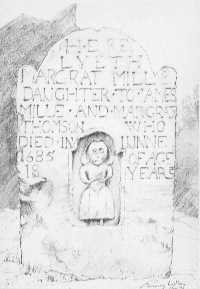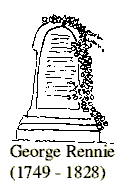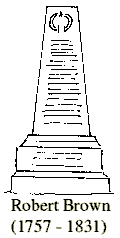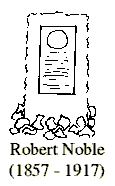
| The oldest gravestone dates from 1685 and bears a fine carved figure of the deceased, the 18-year-old Margaret Mille. |  |

|
Andrew Meikle (died 1811) is buried on the south side of the church to the right of the path leading from the churchyard gate to the main church door. He was employed as a civil engineer at Houston Mill, directly across the river from the churchyard. |

|
George Rennie (died 1828) is buried on the east side of the church. Farmer at Phantassie, immediately beyond Houston Mill, George Rennie is remembered not only for being the brother of John Rennie, the famous civil engineer (who was brought to his profession by Andrew Meikle and is buried in St Paul's Cathedral, London), but also for his own considerable contribution to agricultural improvements. |

|
Robert Brown (died 1831) is buried close to George Rennie to the south-east of the church. The tenant farmer at Markle, in the west of the parish, Robert Brown was also a successful agriculturist and is best remembered for his writings on the subject, and particularly his editorship of the influential Farmers Magazine. |

|
Also interred within the churchyard, a little to the north-east of the church, is Robert Noble RSA, the artist, who lived in Preston Road and before his death in 1917 painted many scenes of East Linton and the surrounding landscape. |
Back to introduction